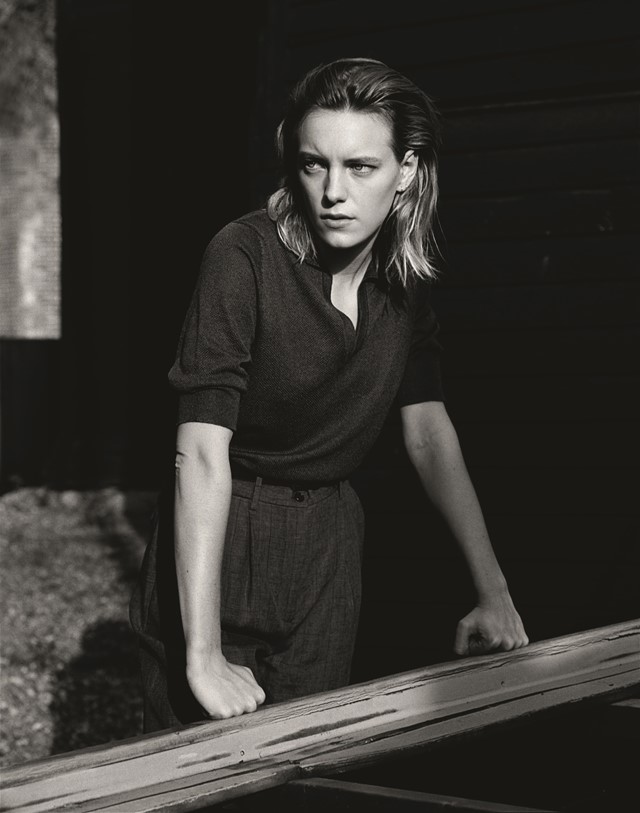As an exhibition of Alasdair McLellan's campaign photography for the brand opens in London, Howell reflects on their uniquely charming process, and the appeal of strong women
Margaret Howell has been part of the fashion industry for a long time, and yet she claims never really to have been ‘fashion’ at all. Born in Surrey in 1946, she studied art at Goldsmiths in London, and began creating practical, unfussy workwear garments – simply because that was what she wanted to wear – soon afterwards. She opened her first workshop in 1973, her first store in 1977, and has since developed a dedicated following for her quietly stylish aesthetic. Traditional, English-manufactured cloths – twills, tweeds, cottons and the like – are her bread and butter, and yet, far from feeling austere, at her hand become at once informal and refined.
Howell’s particular Britishness might be one of the strongest links between her work and that of Alasdair McLellan, the renowned British photographer who, since 2011, has been shooting the brand’s campaigns. Each season, they venture out into British landscapes together – ranging from Brighton beach and Devil’s Dyke to London’s Southbank Centre and Crystal Palace – capturing models who, in all their windswept insouciance, seem to embody the very spirit of the brand. This collaborative series has become something of a signature for Howell, the black and white photographs developing a certain synonymity with the unfussy loveliness she champions so well. This week, a new exhibition in Howell’s Wigmore Street store will celebrate their years of working together; McLellan has selected 40 photographs from the campaigns he has shot, including some as yet unseen from years gone by, as well as the new Spring/Summer 2017 images.
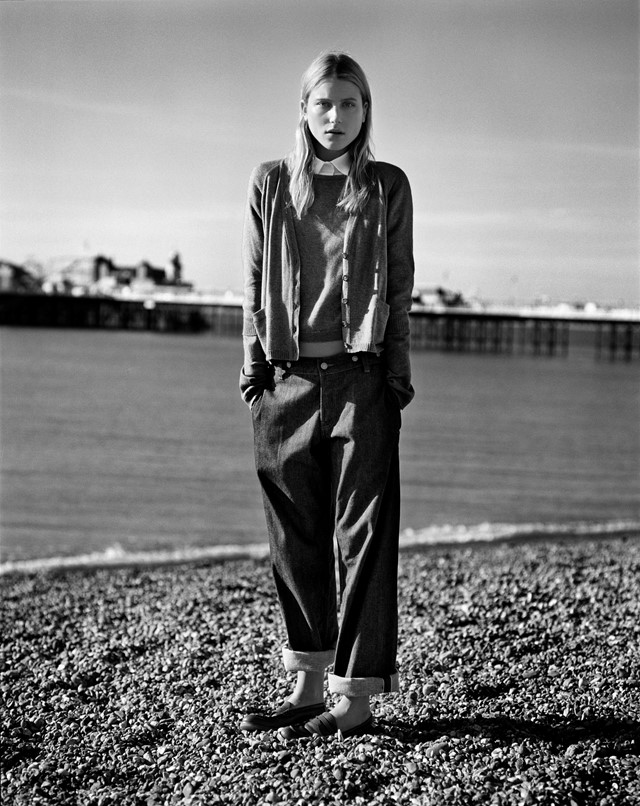
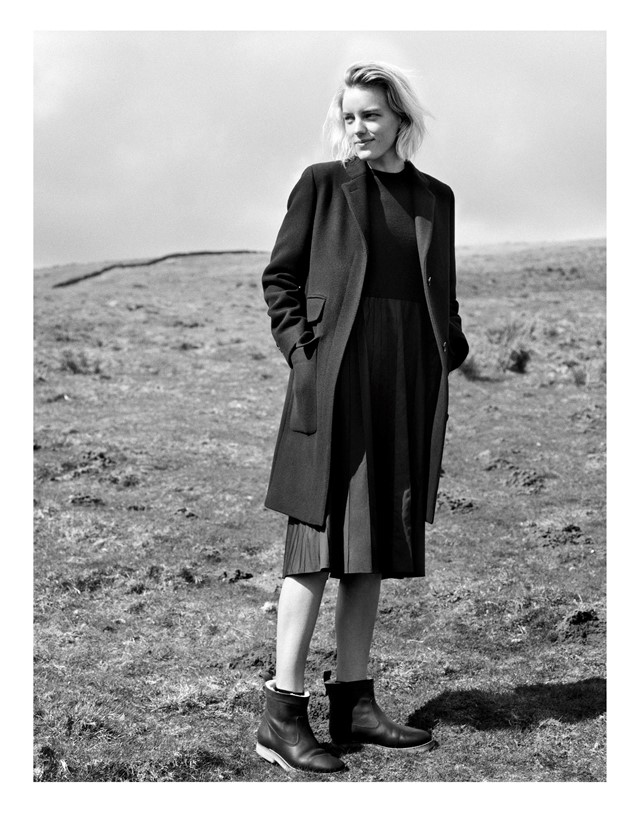
“It is, I think, trying to get a certain realism in the field of fashion photography, and I like that” Margaret Howell
There is something uniquely compelling about these images, which are at odds with the stereotypical concept of a glossy fashion campaign. “It is, I think, trying to get a certain realism in the field of fashion photography, and I like that,” she tells me as we sit in her serene, central London store, where light streams in through enormous skylights and Anglepoise lamps nestle into custom cubbyholes. McLellan’s own love of British landscapes is well-documented, so he’s not one to argue with her various chosen locations. “We have shot all over,” he says of working with Howell. “She loves it when the weather is typically British and isn’t bothered when we’re shooting if it’s raining in summer, or sunny in winter. She understands that this is just the way the country happens to be and goes with it.” “I quite like the idea of doing [the campaigns] in Britain, partly because I do have a fondness for it, but also because in a way a lot of our clothes are known as British designs,” Howell continues. “I am a British designer, and this does stem from one’s upbringing, and a lot of the fabrics I use are made in Britain and so on.”
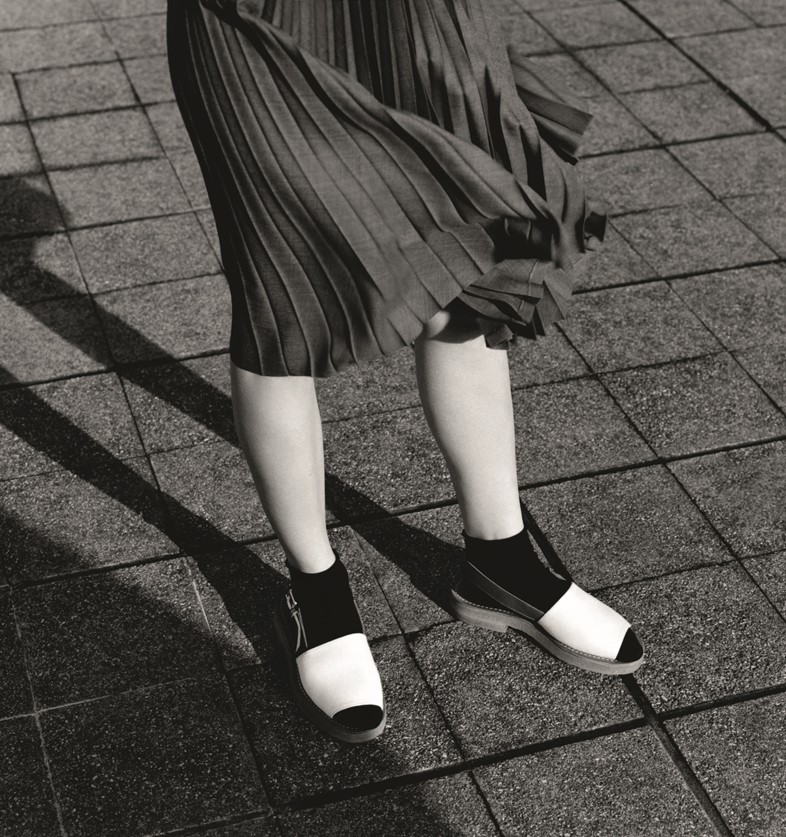
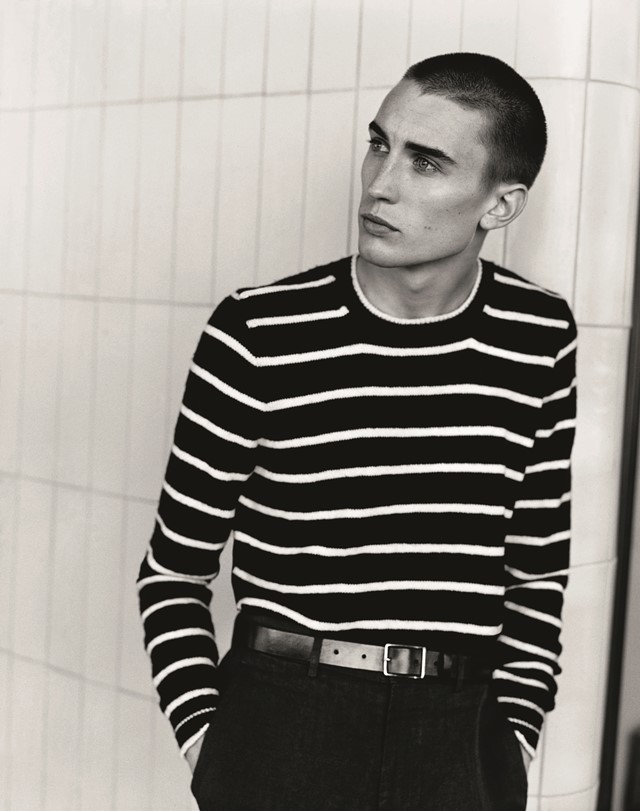
Of course, the casting is as vital as the locale to this process. “One has the idea of the location and then it becomes more on the day. I often let the photographer choose the first shots,” she continues. “Most important for me is not allowing the model to go into ‘model mode’ and keeping it realistic. It’s got to flatter.” What does she mean by ‘model mode’, I ask? “A good model has an element of one’s own attitude to how they pose and things like that,” she explains. “I like the girls to be quite strong-looking, strong women, that are independent and naturally of strength, rather than delicate. They’re not necessarily easy to find,” she continues. “When you do it’s a dream because you just put the clothes on them and they seem to look nice in everything. You don’t have to work hard at the posing or that sort of thing.”
“I like the girls to be quite strong-looking, strong women, that are independent and naturally of strength, rather than delicate” Margaret Howell
Over the years, the process of casting these women has also become collaborative: “Sometimes, one seems to find those models partly through the team around Alasdair,” Howell says. “Other times we find them, and sometimes we don’t see eye to eye, but I like to take a chance.” In these situations, Howell has learned to trust in McLellan’s decisions. “Ultimately it’s him seeing. He will know when he has something that he thinks will be right. I’m looking at it from a distance, and he’s looking at it through a lens.” The length and duration of their working together has allowed the pair to weave a kind of intuition between them. “It’s nice getting to know someone. You almost build a sort of trust and respect for each other’s ideas and views,” she says. “I think it’s become like that in a way.”


Howell’s way of describing McLellan’s methods – full of admiration, but never gushing – speaks powerfully of this trust and respect. He is tenacious, and tireless, and committed to getting the best result in a way not dissimilar from her own character, it seems. Not that she would succumb to such flattery. “You know, Alasdair isn’t one to sit around chatting,” she says. “He wants to do the job. He is serious-minded about it and I like that.” It is clear that McLellan’s approach resonates with Howell’s own – and, with that in mind, I leave her to get back to her work; although you’d never know it from her demeanour, she is only days before revealing her new collection, and there is much to be done.
Alasdair McLellan for Margaret Howell, 2004-2017 runs from February 17 until March 19, 2017 at Margaret Howell, Wigmore Street.
